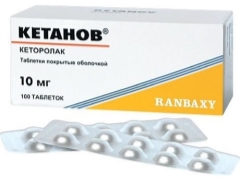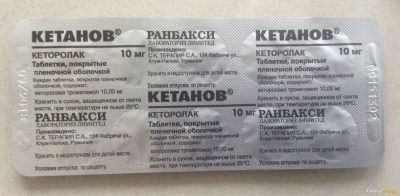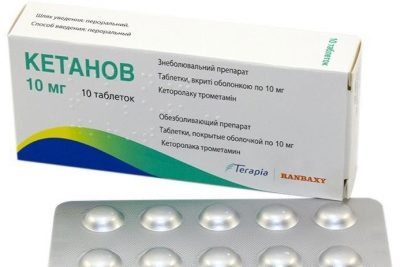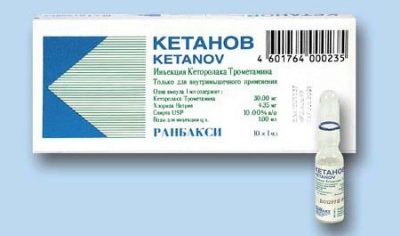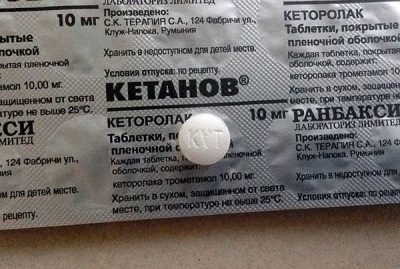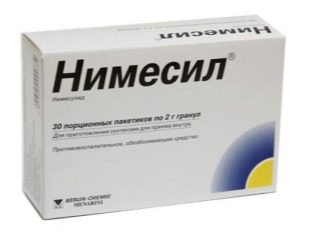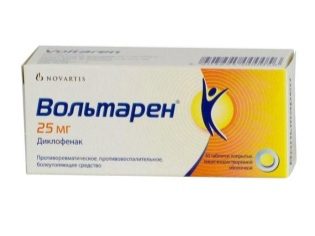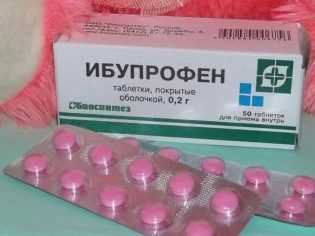Pain reliever "Ketanov" for children
With severe pain, for example, with dental pain, adults use the effective drug Ketanov. The drug is praised for a quick and pronounced analgesic effect, but they are afraid to give it to children. Is it permitted in childhood and which analogs can be replaced?
Release form and composition
Ketanov represented by two different dosage forms - tablets and solution for injections. The tablets have a round shape and have a white plain or film shell, and one pack includes 10, 20, or 100 pieces. Ketanov solution is injected intramuscularly and is represented by a clear liquid in 1 ml ampoules packed in boxes of 5-10 pieces.
The main ingredient of the drug - Ketorolac. Its dosage in 1 tablet is 10 mg, and in 1 ml of solution - 30 mg. Additionally, the solid form includes macrogol, starch, silica, talc and other components. In the injection form, such auxiliary components as ethanol, sodium chloride, sterile water, sodium hydroxide and edetate disodium are present.
How to act and when applied
Ketans are referred to as anti-inflammatory drugs that have a pronounced analgesic effect.. It is many times greater than the effect of the use of any other drugs with non-steroid structure. That is why Ketanov is in demand for moderate and severe pains of various origins.
The tool is most often used for injuries and fractures, as well as for postoperative pain. In addition, the drug is used for toothache caused by pulpitis or other diseases of the oral cavity. It is also prescribed for otitis, biliary colic, radicular syndrome, pain due to a neoplastic process, renal colic and other conditions.
The therapeutic effect of Ketanov is due to its ability to affect the formation of prostaglandins - substances that activate inflammation, pain syndrome and fever. In this case, the drug does not affect the central nervous system, which makes it a good alternative to narcotic anesthetic drugs.
From what age is assigned to children
According to the instructions attached to the tablets, Ketans are not recommended under the age of 16 years. If you need to give pain medicine to a younger child (for example, at 8 years of age), it is better to consult a doctor.
Contraindications
The drug is not prescribed for intolerance to Ketorolak or any other ingredient. Also, it is not advised to give for severe pain in the abdomen, as this may interfere with providing timely assistance with surgical pathologies. In addition, Ketanov is not prescribed for many diseases of the gastrointestinal tract, exacerbation of liver pathologies, renal failure, blood diseases and thyroid disorders.
Side effects
If you give the child Ketanov, it can lead to the appearance of:
- Severe nausea or vomiting;
- Skin rash or other allergic reaction;
- Ulcers on the mucous membrane of the digestive tract;
- Bleeding from the stomach;
- Drowsiness and headaches;
- Kidney problems.
Instructions for use
Ketans in pill form swallow, not biting and squeezed with plain water. The drug is advised to drink after a meal, so that it less harm the gastric mucosa. Often the remedy is taken as needed when severe pains are concerned. Also, the drug may be prescribed on a schedule several times a day.
Ketans are injected into muscle tissue, for example, in the gluteal or deltoid muscle. The dosage of the drug is selected individually, taking into account both the cause of the pain and the patient's response to the drug. Typically, injections are chosen to obtain a quick analgesic action. As soon as such a need passes, they proceed to taking the medicine inside.
Analogs
Ketanov has several analogs with the same active substance (Ketorolak, Ketokam, Ketorol, Dolak and others). However, all of them in the form of tablets are contraindicated in children under 16 years of age.
When the child pains, instead of Ketanov, it is preferable to give such drugs:
- Nimesil. This medicine is produced in granules, packaged in sachets. It is prescribed for severe pain in children over 12 years old. Nimesil analogue with the same active substance is Nise, who in tablet form or in suspension is prescribed from the age of six.
- Voltaren. This drug based on diclofenac is used in children of different ages. It is represented by suppositories, coated tablets, gel, plaster and other forms.
- Ibuprofen. It is prescribed even to the smallest patients, since it is allowed from 3 months of age. For infants, this remedy is prescribed in suppositories or suspensions, and tablets and capsules are used in children over 6 years old.
- Analgin. This anti-inflammatory drug is allowed in the form of candles from 3 months of age, and also comes in injections and tablets.
For more information about painkillers, see the transfer of the douter Komarovsky
